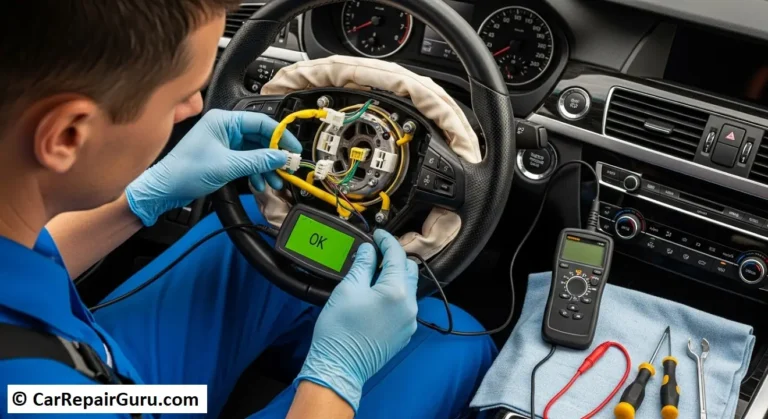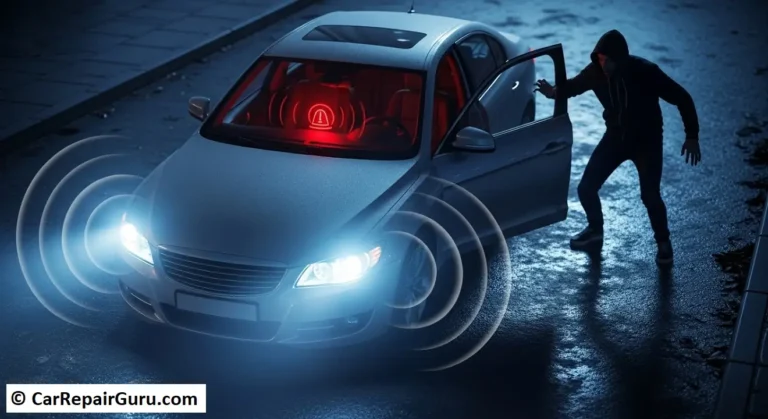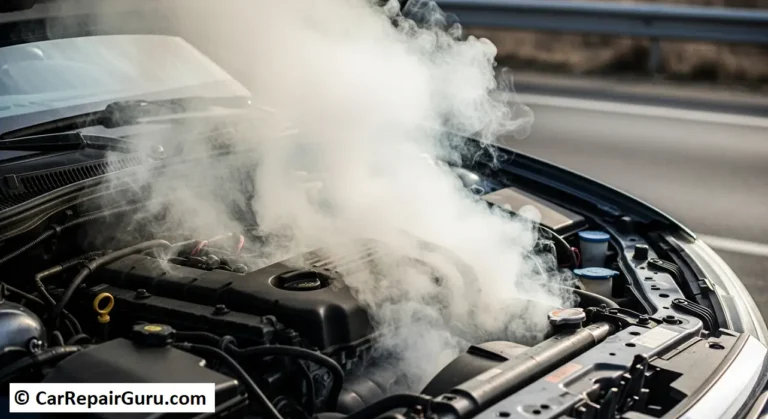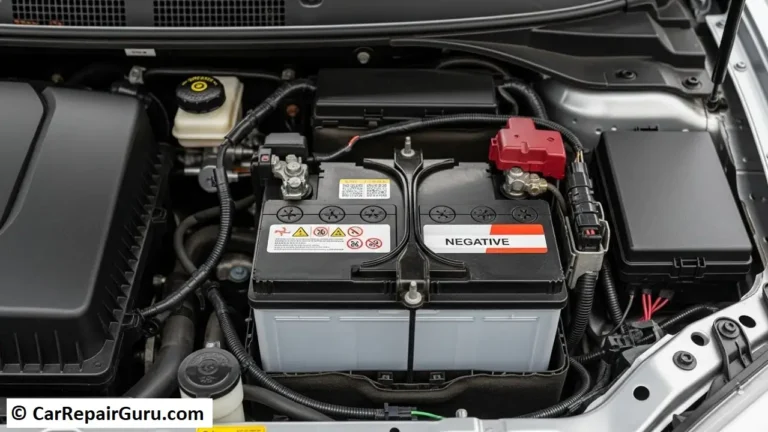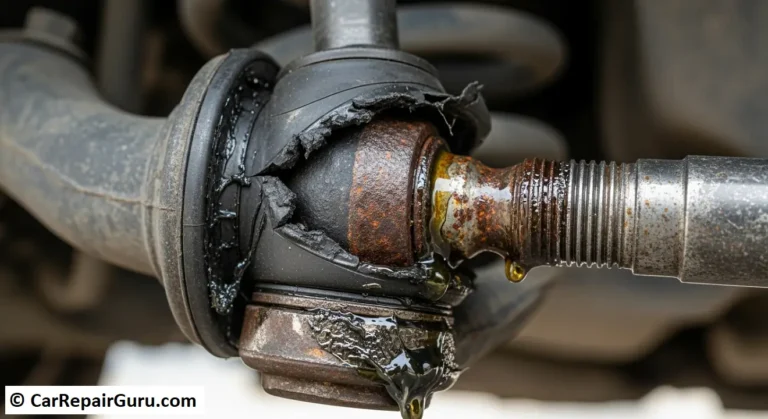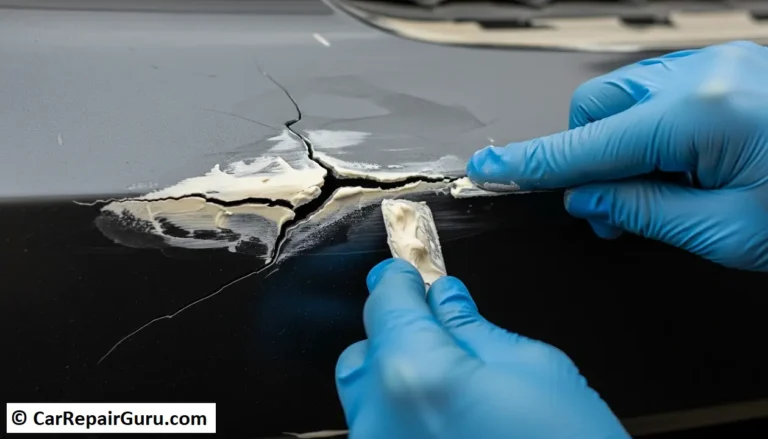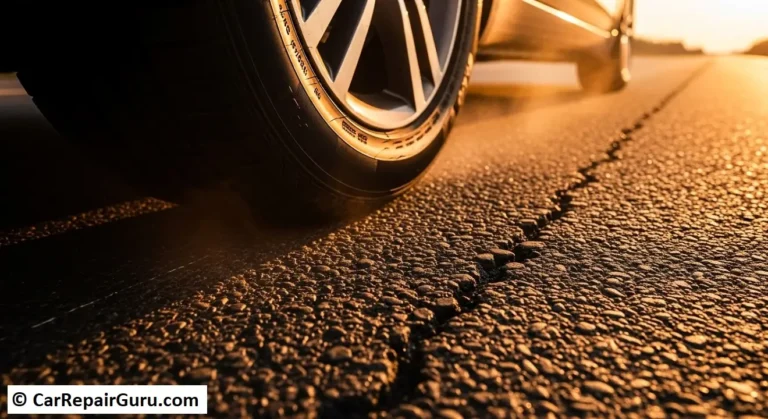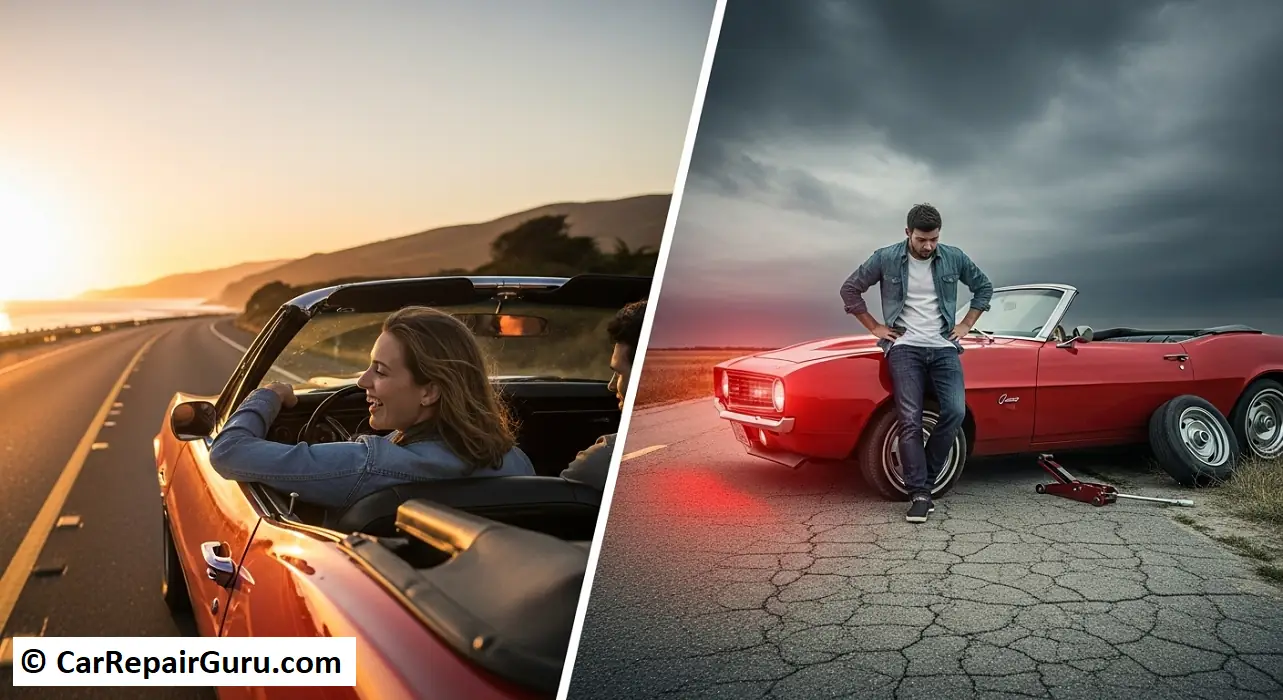
There’s a special kind of magic to a road trip. The playlist is perfect, the snacks are within reach, and the open road promises endless possibility. It’s a feeling of freedom that’s hard to beat. But let’s be honest—that perfect vibe can be instantly shattered by a flat tire, a dead battery, or a preventable mistake. The difference between a memorable adventure and a stressful ordeal often comes down to one thing: preparation.
That’s where this guide comes in. Think of it as your trusted co-pilot, dedicated to ensuring your journey is as safe as it is exciting. We’re covering all the essential road trip safety tips you need, from what to do weeks before you leave to how to handle challenges on the road. Following this advice on how to prepare for a road trip will let you focus on what really matters: making incredible memories.
Before You Leave – The Foundation of a Safe Road Trip
The safest road trips begin long before you pull out of the driveway. Proactive planning and preparation are your best defense against the unexpected. Getting these things right sets the stage for a smooth, worry-free journey.
Perform a Thorough Vehicle Check (The “BLOWFAT” Method)
You don’t need to be a professional mechanic to give your car a crucial once-over. A proper car safety check before road trip can prevent the most common causes of breakdowns. An easy way to remember the key points is with the acronym BLOWFAT.
- B – Brakes: Listen for any unusual sounds like squealing, grinding, or clicking when you apply the brakes. Does the pedal feel too soft or spongy? If anything seems off, get it checked by a professional.
- L – Lights: Have a friend help you check all your lights. Test your headlights (both high and low beams), taillights, brake lights, and turn signals. A burned-out bulb is an easy fix that can prevent a ticket or an accident.
- O – Oil: Pull out the dipstick, wipe it clean, reinsert it, and check the oil level. If it’s low, top it off. Also, look for dark, gritty oil, which may signal it’s time for an oil change.
- W – Water (Coolant): Your engine’s coolant is vital for preventing overheating. Check the coolant reservoir (when the engine is cool!) and make sure the level is between the ‘min’ and ‘max’ lines.
- F – Fuel: This one sounds simple, but it’s a classic mistake. Start your trip with a full tank of gas. It gives you more flexibility for your first leg and peace of mind if gas stations are sparse.
- A – Air: Use a tire pressure gauge to check the air pressure in all four tires and your spare. The correct pressure is listed on a sticker inside your driver’s side door jamb, not on the tire itself.
- T – Tires: Good tread is essential for grip, especially in wet conditions. Use the “penny test”: place a penny upside down in a tread groove. If you can see all of Abraham Lincoln’s head, your treads are too worn, and it’s time for new tires.
Plan Your Route & Share Your Itinerary
While spontaneity is fun, having a solid plan is a core safety measure. Use a reliable GPS app, but always download maps for offline use in case you lose cell service. Check your route for potential construction, road closures, or severe weather forecasts. Most importantly, share your detailed itinerary—including your route, planned stops, and estimated arrival times—with a trusted friend or family member.
Pack a Well-Stocked Roadside Emergency Kit
Your road trip emergency kit is your first line of defense when things go wrong. You can buy a pre-made kit or build your own. Ensure it includes:
- Vehicle Essentials: Jumper cables, a portable tire inflator, a flashlight with extra batteries, a basic toolkit (screwdrivers, pliers, wrench), and road flares or reflective triangles.
- First-Aid Kit: Bandages, antiseptic wipes, pain relievers, gauze, adhesive tape, and any personal medications.
- Personal Items: A few bottles of water, non-perishable snacks (like granola bars or nuts), a warm blanket (even in summer), and a fully charged portable phone charger or power bank.
Organize Your Documents and Insurance
Make sure your driver’s license, vehicle registration, and proof of insurance are up-to-date and easily accessible. It’s wise to have both physical and digital copies. Program your roadside assistance number into your phone and know what your policy covers before you need it.
On the Road – Safe Driving Habits are Non-Negotiable
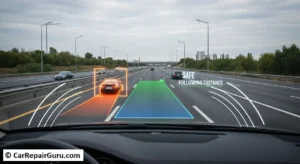
Once you’re on your way, safety shifts from preparation to awareness. Your habits behind the wheel are the single most important factor in keeping you and your passengers safe.
Prioritize Rest – The Fight Against Driver Fatigue
Driver fatigue is a silent threat that impairs your judgment and reaction time just as much as alcohol. It’s a leading cause of accidents on long drives.
- Start Rested: Get a full 7-8 hours of sleep the night before a long drive.
- Take Frequent Breaks: The golden rule is to stop every 2 hours or 100 miles. Don’t just get gas—get out of the car, stretch your legs, and get some fresh air.
- Recognize the Signs: If you’re experiencing heavy eyelids, constant yawning, trouble focusing, or drifting from your lane, you are too tired to drive.
- Don’t Be a Hero: If you feel tired, switch drivers. If you’re traveling alone, pull over at a well-lit, safe rest stop and take a 20-30 minute power nap. It can make all the difference.
Eliminate Distractions – Focus on the Road
In today’s connected world, distracted driving is a massive risk. A few seconds of inattention is all it takes for disaster to strike. These safe driving tips are non-negotiable:
- Phone Goes Away: Put your phone on “Do Not Disturb” mode and place it out of reach. Set your GPS and playlist before you start the car. If you need to use your phone, pull over.
- Eat Smart: Avoid messy meals that require two hands. Snack during your breaks, not while navigating traffic.
- Manage Passengers: Enjoy the company, but make it clear that the driver’s primary focus is the road.
Practice Defensive Driving
Defensive driving means anticipating potential hazards and assuming other drivers might make mistakes.
- Maintain a Safe Following Distance: Use the 3-second rule. When the car in front of you passes a fixed object (like a sign), it should take you at least three full seconds to pass the same object. Increase this to 5-6 seconds in bad weather.
- Constantly Scan Your Surroundings: Be aware of what’s happening in front, behind, and next to you. Check your mirrors frequently and always look over your shoulder to check your blind spots before changing lanes.
- Adapt to Conditions: Slow down in rain, fog, snow, or heavy traffic. The speed limit is a maximum, not a requirement.
Health & Wellness on the Road – Taking Care of the Humans Inside the Car
Road trip safety isn’t just about the car; it’s about the well-being of its occupants. Staying healthy and comfortable is key to staying alert and happy on your journey.
Prioritize Ergonomics to Prevent Aches and Pains
Sitting for hours on end can take a toll on your body. Before you even start the engine, adjust your seat, steering wheel, and mirrors to create a comfortable and supportive posture. A small pillow or rolled-up sweater placed behind your lower back can provide excellent lumbar support and prevent back pain. When you take your scheduled breaks, make them count. Do some simple stretches for your neck, shoulders, and legs to get the blood flowing and prevent stiffness.
Stay Hydrated and Eat Smart
Dehydration is a sneaky cause of fatigue and headaches. Keep a reusable water bottle filled and within reach for everyone. While it’s tempting to live on gas station junk food, packing your own healthy snacks will keep your energy levels stable. Nuts, fruits, protein bars, and jerky are fantastic options that prevent the sugar crashes and sluggishness caused by processed foods. When you stop for a meal, opt for something light that won’t make you feel drowsy afterward.
Managing Medications and First Aid on the Go
If you take any prescription medications, pack more than you’ll need for the trip in case of delays. Keep them in your carry-on bag, not in the trunk where they can be exposed to extreme temperatures. If anyone is prone to motion sickness, have remedies on hand. And finally, make sure your first-aid kit is easily accessible inside the car to quickly handle minor issues like cuts, scrapes, or a sudden headache.
Personal Security and Protecting Your Valuables
A safe road trip also means protecting yourself and your belongings from theft. A few simple habits can make you a much less appealing target.
Make Your Vehicle a Hard Target for Theft
The most effective way to prevent car break-ins is the “clean car rule.” Never leave anything of value visible inside your vehicle—that includes GPS units, phone chargers, sunglasses, and even loose change. A clutter-free car suggests there’s nothing worth stealing. If you need to move luggage or valuables into the trunk, do it before you arrive at your destination. Moving bags in a hotel parking lot is like putting up a sign that says, “valuables in here!” When parking for the night, always choose well-lit areas with plenty of foot traffic, preferably close to the entrance of your hotel.
Securing Your Accommodations
Your safety precautions continue once you check in. Read recent reviews about a hotel’s safety before you book. Once you’re in your room, use all available locks, including the deadbolt and security latch. For extra peace of mind, a simple rubber doorstop wedged under the door can provide an extra layer of security. Avoid saying your room number out loud in public areas of the hotel.
Navigating Public Spaces and Interactions
Personal safety while traveling relies heavily on awareness. Always trust your gut. If a rest stop, gas station, or individual feels unsafe, leave without hesitation. Be cautious at gas pumps by checking the card reader for any loose parts that might indicate a card skimmer; when in doubt, pay inside. Be friendly with people you meet, but be reserved about sharing specific details of your travel plans or that you’re traveling alone.
Leveraging Technology for a Safer Trip (And Avoiding Its Pitfalls)
Modern technology offers incredible tools for a safer journey, but it’s important to use them wisely and have backups.
Must-Have Apps for Your Safety Arsenal
Your smartphone is a powerful safety device. Use best road trip apps like Waze or Google Maps for real-time alerts about traffic jams, accidents, and road hazards. Install a reliable weather app that can send push notifications for severe weather warnings along your route. Crucially, use your phone’s built-in location-sharing feature to allow a trusted contact back home to see your progress in real-time. This provides peace of mind for them and a digital safety net for you.
Staying Powered and Connected
A dead phone is a liability. In addition to a car charger, pack at least one fully charged portable power bank. For those venturing into remote areas like national parks where cell service is non-existent, consider renting or buying an emergency satellite messenger. These devices can send an SOS signal with your location in a true life-or-death emergency. Also, practice good digital hygiene: avoid using unsecured public Wi-Fi for banking or other sensitive activities.
When to Distrust Your Tech
Technology is a tool, not a replacement for common sense. If your GPS tries to direct you down a poorly maintained, unlit, or private-looking road, question it. Trust road signs and your own judgment. The best backup of all is a physical paper map. It never runs out of batteries and can be a lifesaver if your tech fails. Similarly, have physical copies of your most important documents as a failsafe.
Special Considerations for a Secure Journey
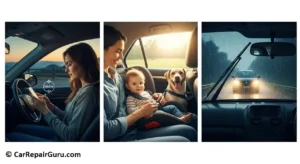
Not all road trips are the same. Depending on who you’re with and where you’re going, you may need to take extra precautions.
Safety Tips for Solo Road Trips
The freedom of a solo journey is unparalleled, but solo road trip safety requires extra vigilance. Check in with your designated contact person at set times each day. Never post your exact location on social media in real-time; wait until you’ve moved on. Above all, trust your intuition. If a person or place gives you a bad feeling, leave. Your safety is more important than being polite.
Traveling Safely with Kids & Pets
When kids are on board, their safety is paramount. Double-check that car seats are properly installed and that the harness is snug. For furry friends, a secured crate or a pet safety harness is a must—an unrestrained pet can become a dangerous projectile in a sudden stop. Never, ever leave a child or pet unattended in a vehicle, even for a minute. The temperature inside a car can become deadly in a shockingly short amount of time.
Navigating Bad Weather
Weather is one of the biggest variables on any road trip. Check the forecast before you leave and along your route. If you encounter heavy rain, fog, or snow, reduce your speed significantly to prevent hydroplaning or skidding. Turn on your headlights to increase your visibility to others. If conditions become too severe, don’t try to be a hero and push through. The safest decision is often to find a safe place to pull over and wait for the weather to pass.
Your Adventure Awaits
A truly great road trip is built on a foundation of smart preparation and mindful awareness. By performing a thorough vehicle check, packing a comprehensive road trip emergency kit, and committing to safe driving habits, you take control of your journey. You empower yourself to handle the unexpected, freeing you up to embrace the spontaneity and joy of the open road.
These road trip safety tips aren’t meant to scare you; they’re meant to prepare you. Now that you’re ready, the road is calling. Go answer it.
What’s your #1 road trip safety tip? Share it in the comments below!
Frequently Asked Questions
What should I do if my car breaks down on a road trip?
First, get to a safe location. Signal, and pull over to the far-right shoulder or off the road entirely if possible. Turn on your hazard lights. If you cannot safely exit the vehicle, stay inside with your seatbelt on and call for roadside assistance.
Is it safe to sleep in your car at a rest stop?
It can be, but you need to be smart about it. Check local regulations, as some areas prohibit overnight parking. Choose a well-lit, busy rest stop. Park near other vehicles, lock all your doors, and cover your windows for privacy. Never run the engine while you sleep due to the risk of carbon monoxide poisoning.
How can I keep my belongings safe from theft on a road trip?
Follow the “clean car rule”—keep all items out of sight, preferably locked in the trunk. Park in secure, well-lit locations overnight. When you check into a hotel, take any high-value items like laptops and cameras into the room with you.
How many hours a day is it safe to drive on a road trip?
Most safety experts agree you should not drive for more than 8 to 10 hours in a single day. This translates to roughly 400-500 miles, depending on speed and conditions. More important than the clock, however, is your body. If you feel tired, unfocused, or drowsy, it’s time to stop for the day, regardless of how long you’ve been driving.
What should I do if a large animal, like a deer, runs in front of my car?
Your instinct will be to swerve, but you must resist it. Swerving can cause you to lose control, roll your vehicle, or collide with another car or obstacle, which is often more dangerous than the initial impact. Instead, do the following:
- Grip the steering wheel firmly with both hands.
- Brake firmly and steadily in a straight line.
- Look where you want to go, not at the animal. If a collision is unavoidable, it is safer to hit the animal than to swerve into a more hazardous situation.
